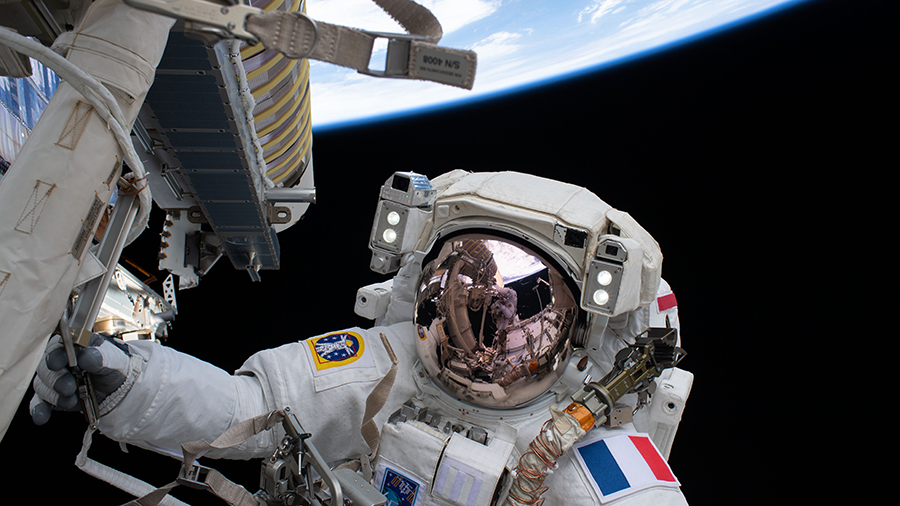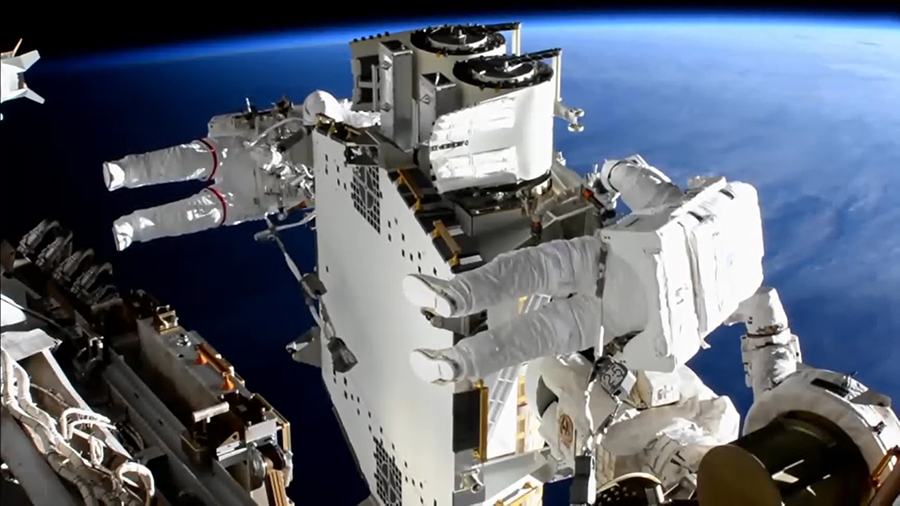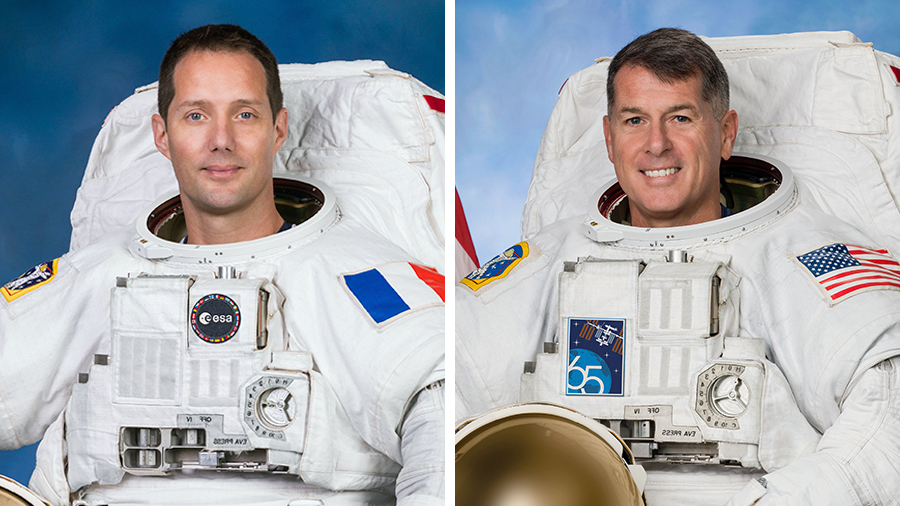Astronauts Look to Friday Spacewalk after Roll Out Solar Array Installation

The International Space Station has a new solar array that was installed during Sunday’s spacewalk by Expedition 65 astronauts Shane Kimbrough and Thomas Pesquet. The duo will conduct a third spacewalk on Friday to install a second solar array.
The first ISS Roll-Out Solar Array (iROSA) was successfully installed and deployed during a spacewalk on Sunday and is performing well. Ground teams will continue to collect data on its performance and compare it to last year’s information, calculating the total power gained.
Kimbrough and Pesquet completed the solar array installation work and began configuring a second iROSA during Sunday’s six-hour and 28-minute spacewalk. The duo now turns its attention to Friday’s excursion to install the second iROSA on the opposite side of the Port-6 truss structure where the first solar array is installed. NASA TV, on the agency’s website, and the NASA app, will start its live coverage at 6:30 a.m. with the spacewalk set to begin at 8 a.m. when the veteran spacewalkers set their U.S. spacesuits to battery power.
The spacewalking duo joined NASA Flight Engineers Megan McArthur and Mark Vande Hei for a conference with ground specialists. Then Kimbrough and Pesquet serviced some spacesuit components and organized tools for Friday’s upcoming spacewalk. McArthur and Vande Hei will once again assist the pair in and out of their spacesuits and provide robotics support on Friday.
Research still continued aboard the orbital lab today as the crew explored pharmaceuticals, protein crystals and the human eye.
Commander Akihiko Hoshide serviced samples inside the Microgravity Science Glovebox for a study that explores freeze-drying as a way to preserve medicines for long periods of time. Kimbrough peered through a microscope looking at samples for the Real-Time Protein Crystal Growth experiment which could lead to new disease therapies on Earth.
Vande Hei took on the crew medical officer role today and scanned the eyes of McArthur using medical imaging hardware. The eye exams take place regularly on the station since astronauts have reported vision issues after living in space for months.
The two Roscosmos flight engineers, cosmonauts Oleg Novitskiy and Pyotr Dubrov, split their day between science and maintenance activities. Novitskiy explored plasma crystals first then photographed the condition of the Pirs docking compartment ahead of its departure later this summer. Dubrov checked communications gear and worked Russian life support hardware.
Mark Garcia
Powered by WPeMatico







